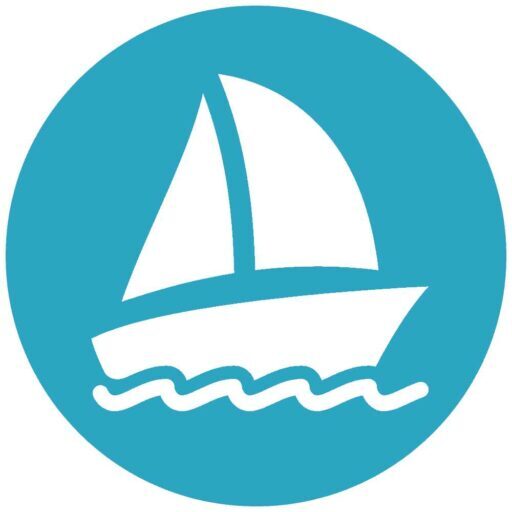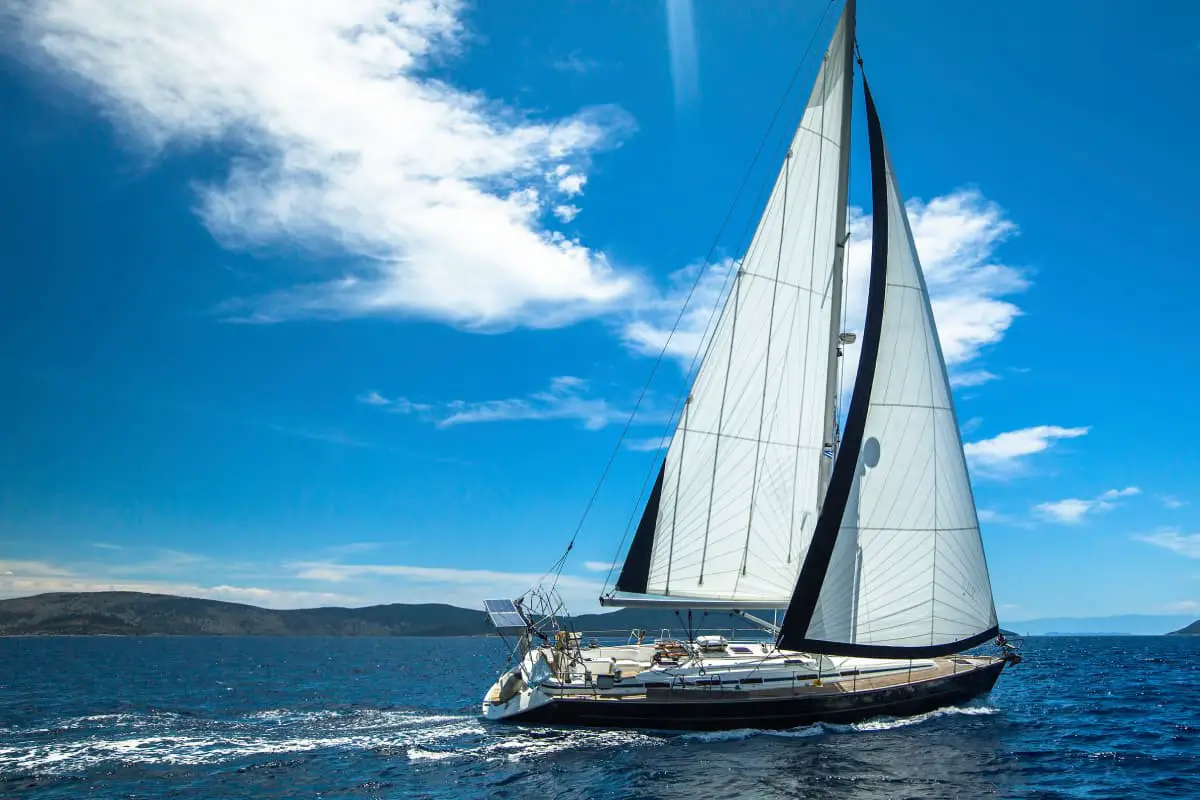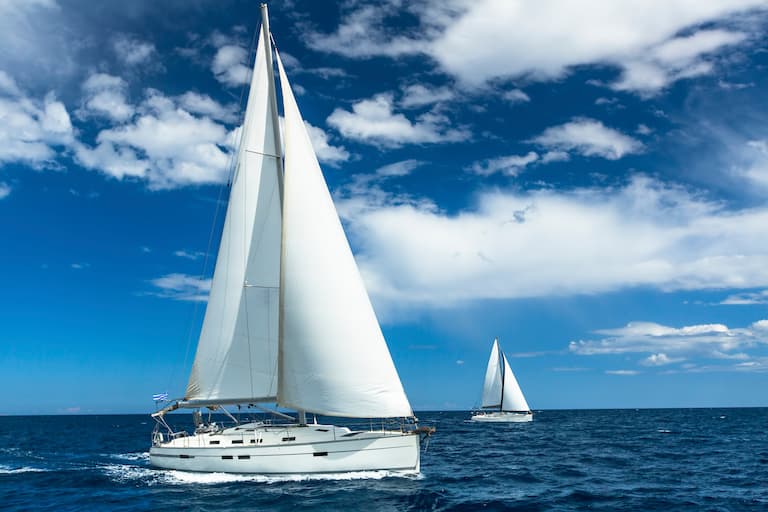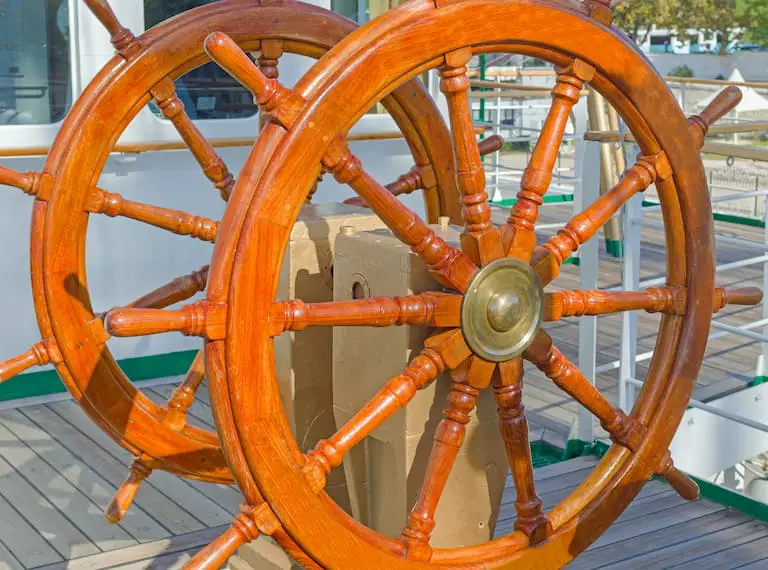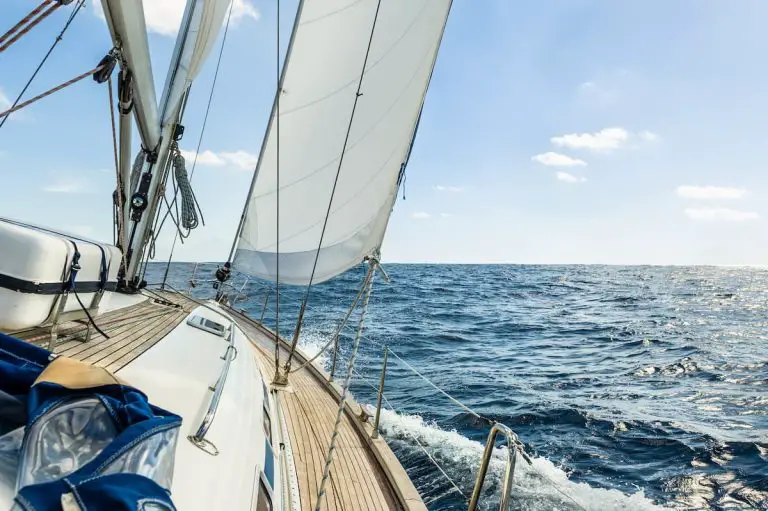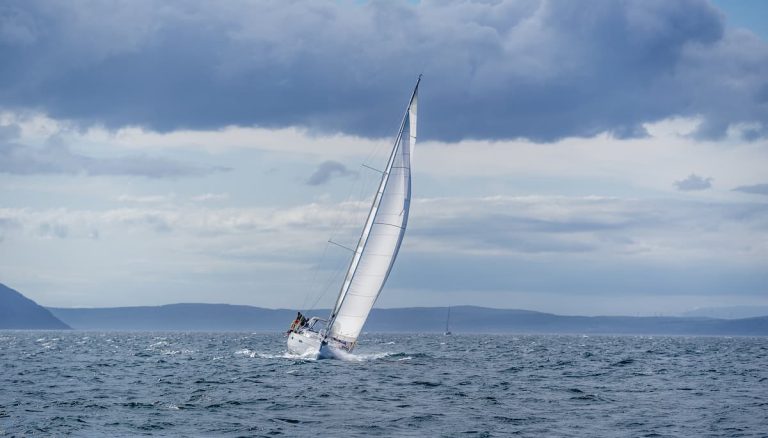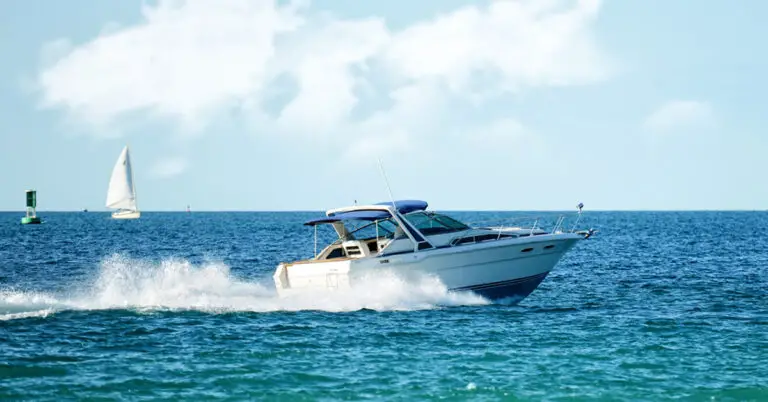Why Do Sailboats Have Two Sails? (Explained)
If you’ve ever been sailing or watched a regatta, you’ll know that boats typically have two or more sails. It’s uncommon to see them with less than that. But what’s the reason behind this?
Sailboats have two sails to improve the boat’s maneuverability, balance, speed, and ease of handling. The front sail is called the jib, while the one behind it is the mainsail. Some boats have more than two sails to increase their stability and speed even further.
The way sailboats work is very interesting, so you’ll want to learn more! In this article, I’ll give you some in-depth explanations for why sailboats have two sails. So keep reading, everything you need to know is below.
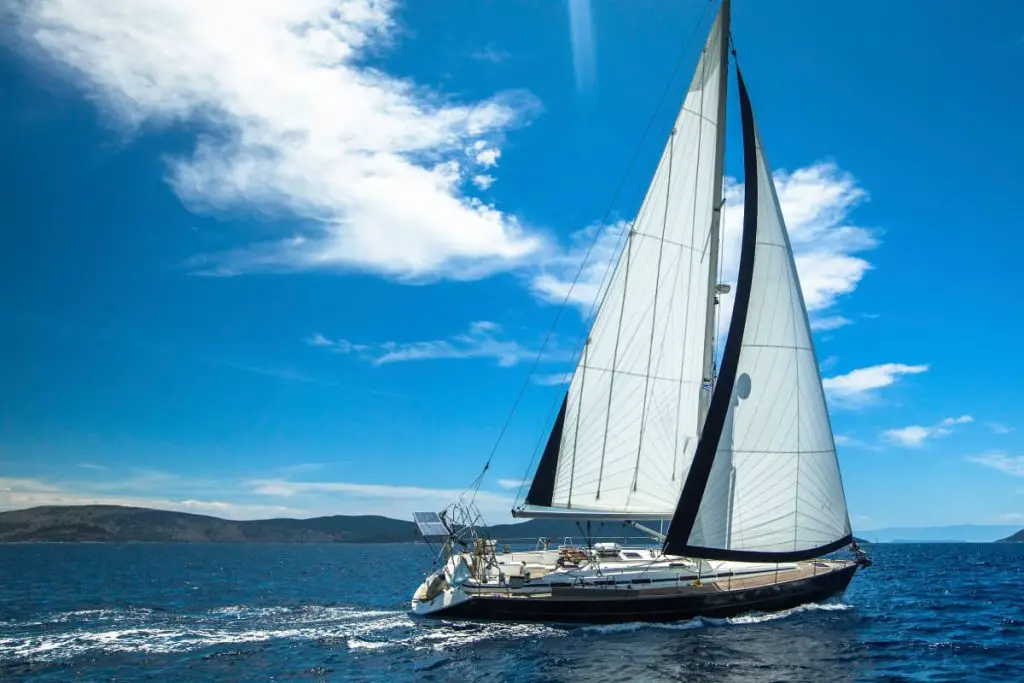
How Does Having Two Sails Help Sailboats?
It’s rare to see a sailboat with only one sail, and this might make you wonder what the science is behind this phenomenon. So, how does having two sails help sailboats?
Having two sails (a mainsail and a jib) helps sailboats by allowing the sailor to better maneuver the sailboat through the water, easily increase the boat’s speed, and have better handling over the boat overall. In short, having two sails offers improved control over the boat.
With all these benefits, sailors can handle their boats with ease. I’ll discuss these points in more detail below:
Two Sails Offer Greater Maneuverability
Many beginner sailers make the mistake of assuming that sailboats move because the wind exerts a force on the sails.
This is only partly true because when a boat has more than one sail, the wind’s current is split along the mast into two rough wind streams on either side of the sail. The space in front of the sail will have a low-pressure area, while the wind will create high pressure behind it. The pressure difference exerts a force on the sails that propels them forward.
The sail will move in the wind stream direction with the lowest pressure by being dragged forward.
The lowest-pressure wind stream gradually stabilizes, resulting in the wind moving faster on that side of the sail. This causes the sailboat to move because the wind is pulling the sail, and it is the same concept as an airplane’s wings creating lift.
Having Two Sails Allows for Increased Speed
A sailboat speeds up when a sail is perpendicular to the wind, with the wind blowing into the sail.
However, having two or more sails can help your sailboat go even faster. Some wind gets caught on your mainsail and some blows around it when you’re out on the water. The air that moves around the mainsail contributes to your sailboat’s acceleration, which you could further increase by adding another sail.
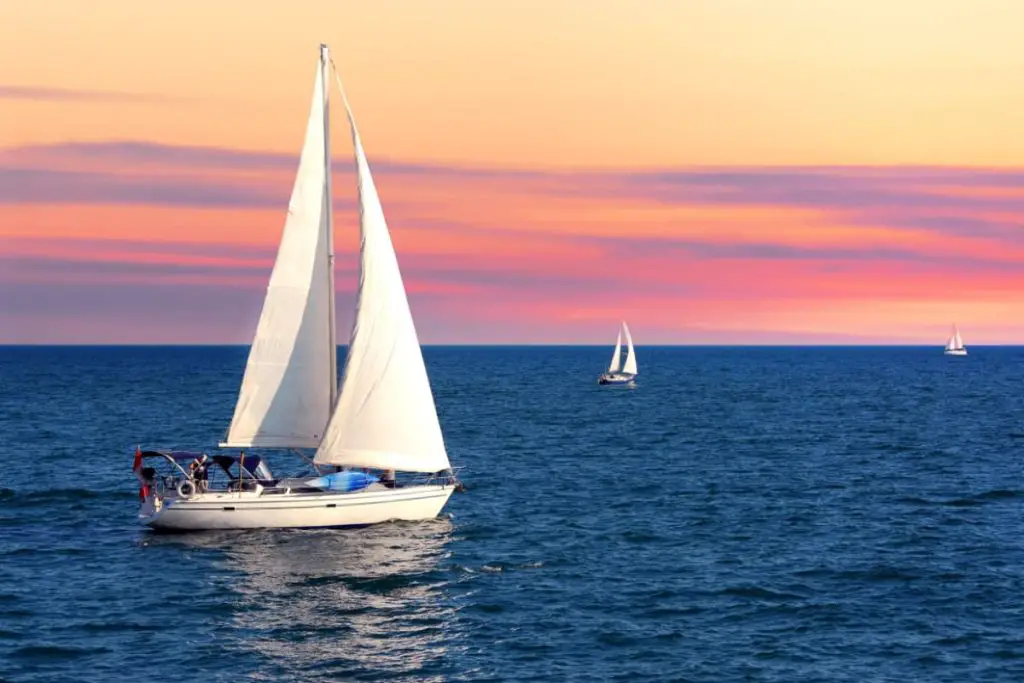
Two Sails Increases the Ease of Handling
When boats have two sails, you can handle them much easier. This is because all boats have a pivot point located behind the mast. Most of the mainsail’s surface area is behind the pivot point.
If you were to sail your boat with only the mainsail, the wind’s force behind the pivot point would be greater than the force in front of it. The sailboat would then tend to turn in the wind’s direction.
In a strong wind, sailing with only the mainsail would mean that your rudder wouldn’t be powerful enough to steer the sailboat, and you would need to rely on the mainsail to steer your boat.
However, adding a jib to your sailboat would balance out the force from the mainsail, making it easier for the sailor to handle and making the boat more stable.
A sailboat’s keel helps keep it upright by compensating for the wind’s sideways forces. However, you adjust the jib slightly to move the sailboat in another direction, proving that having two sails helps you control your sailboat more effectively.
What Are Boats With Two Sails Called?
Boats with two sails are called cutters or sloops. Both have a mast with two sails, but a cutter has two foresails, while a sloop has a mainsail and a jib. Ketches are also sailboats but feature more than one mast with multiple smaller sails.
There are a variety of sailboats out there. Below is some more information about these three sailboat varieties:
Cutter: Sail Configuration
Like sloops, cutters have a single mast. Unlike sloops, cutters usually have two headsails. Cutter headsails tend to have a lower center of gravity than the jib sail of sloops, giving cutters more stability and better control in rough conditions. Cutters are commonly seen in Bermuda-rigged or gaff-rigged configurations.
Regardless of the configuration, cutter rigging is more complex than the rigging of most sloops. This makes them a bit more challenging to handle single-handed.
Sloop: Sail Configuration
When most people think about sailboats, this is the one they see in their minds. The classic single mast, double sail configuration with a Bermuda rig is fun to sail and reasonably easy to control. The high-profile mast does, however, make them easier to capsize in rough conditions.
While the Bermuda rig is the most popular configuration for sloops, it is not the only one. Some sloops feature fractional sloop rigs or specially designed racing rigs. Fractional sloop rigs offer more stability options and usually are preferred for extended offshore use. As you may have guessed, Racing rigs are designed for speed and maneuverability.
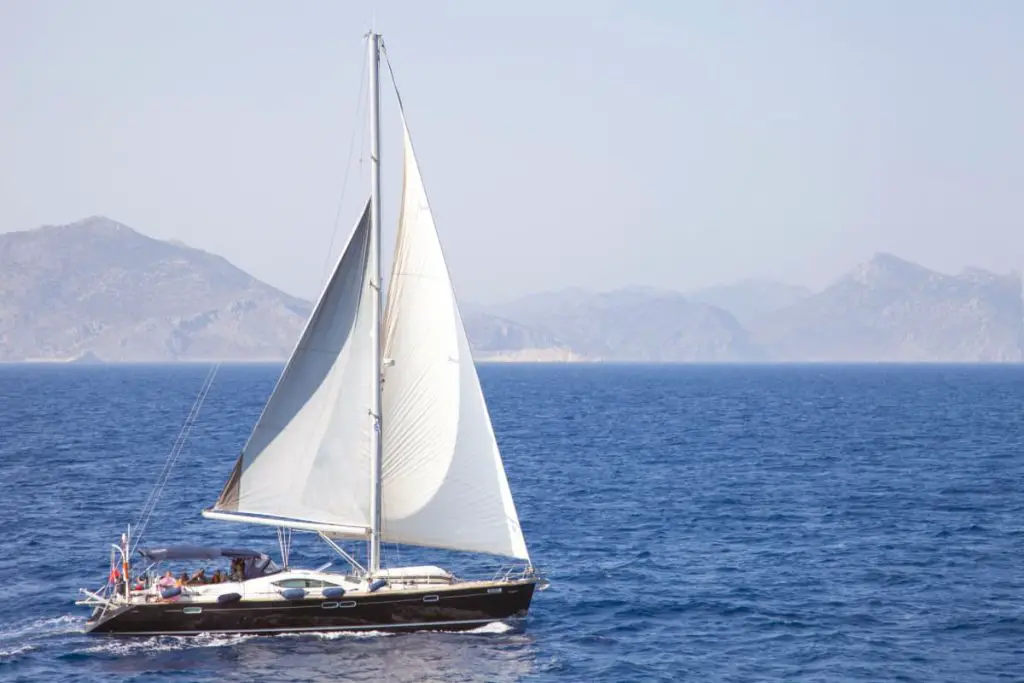
Ketch: Sail Configuration
We’ll now take a short visit to touch on a type of sailboat with more than one mast. Ketches feature a taller mainmast near the front of the boat and a shorter mast near the rear. The shorter mast is called the mizzenmast.
This split rig divides the sail plan into smaller components than a single mast sailboat. A ketch can be either Bermuda-rigged or gaff-rigged. Ketches usually have smaller sails and shorter masts than sloops or cutters, making them easier to control in difficult weather conditions.
Though generally slower than their single mast cousins, sailors who prefer safety over speed tend to favor ketches for their durability and the peace of mind that comes from having a second mast.
Yawls are closely related to ketches, yet the mizzenmasts are set further back.
Why Do Sailboats Have Two Sails – Final Thoughts
Sailboats have two sails as they allow the sailor to:
- Enable better maneuverability
- Increase their traveling speed
- Improve the sailboat’s ease of handling
Sailboats with two sails and one mast can be either sloops or cutters.
